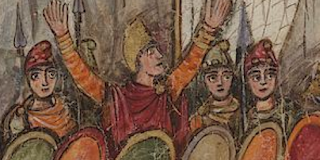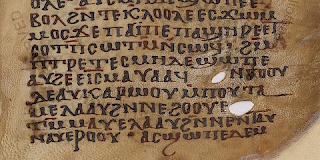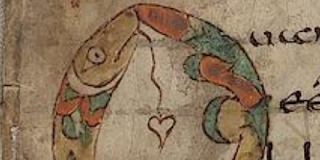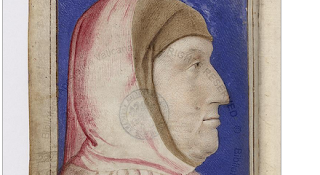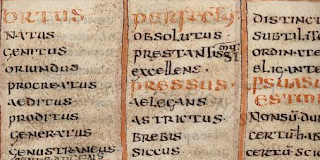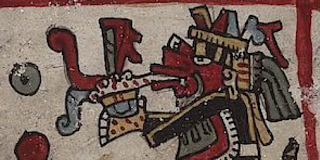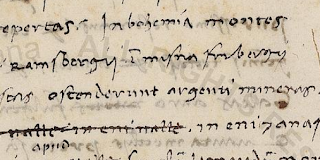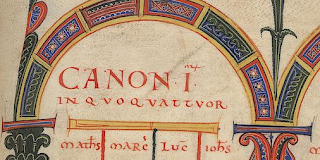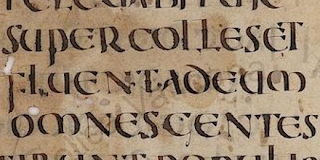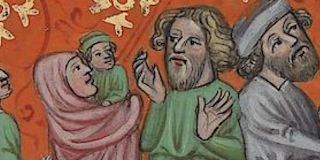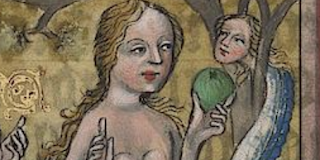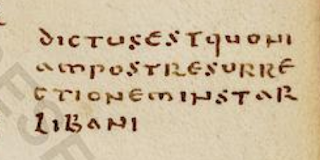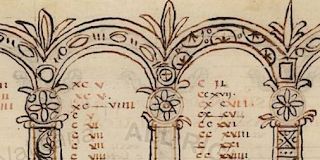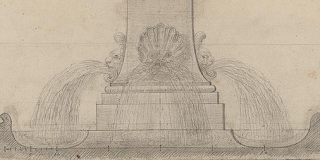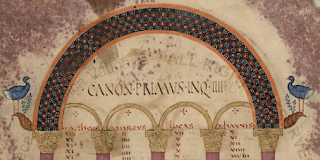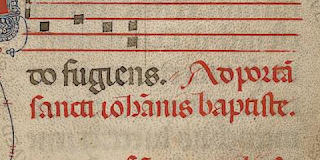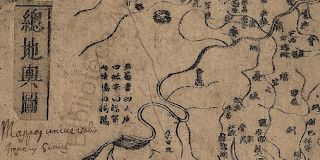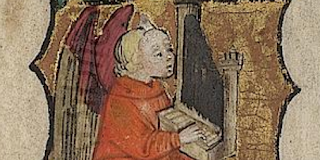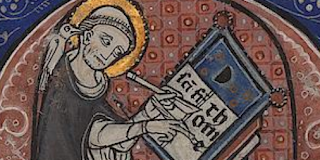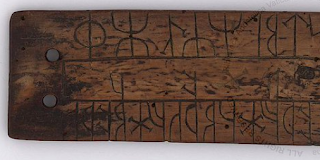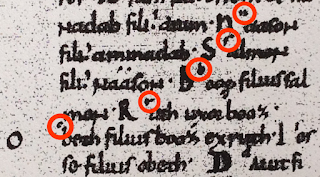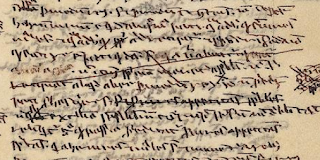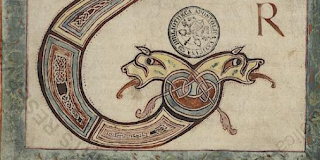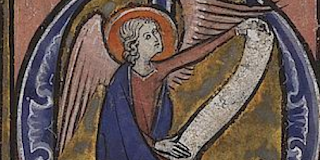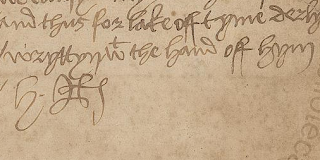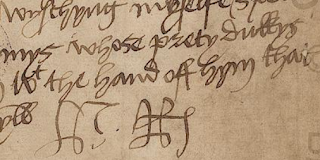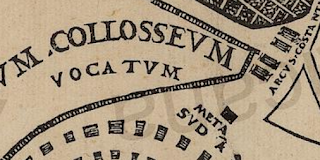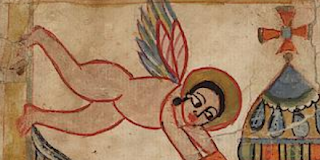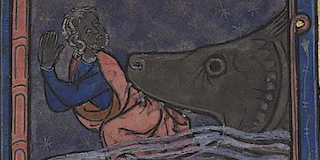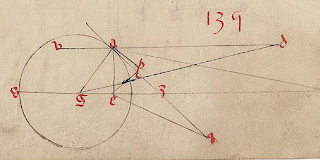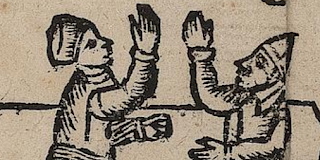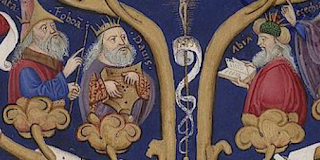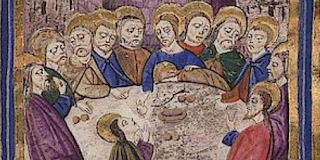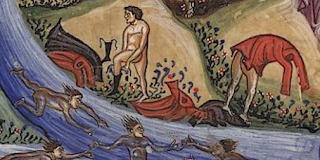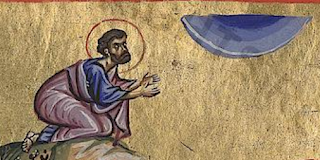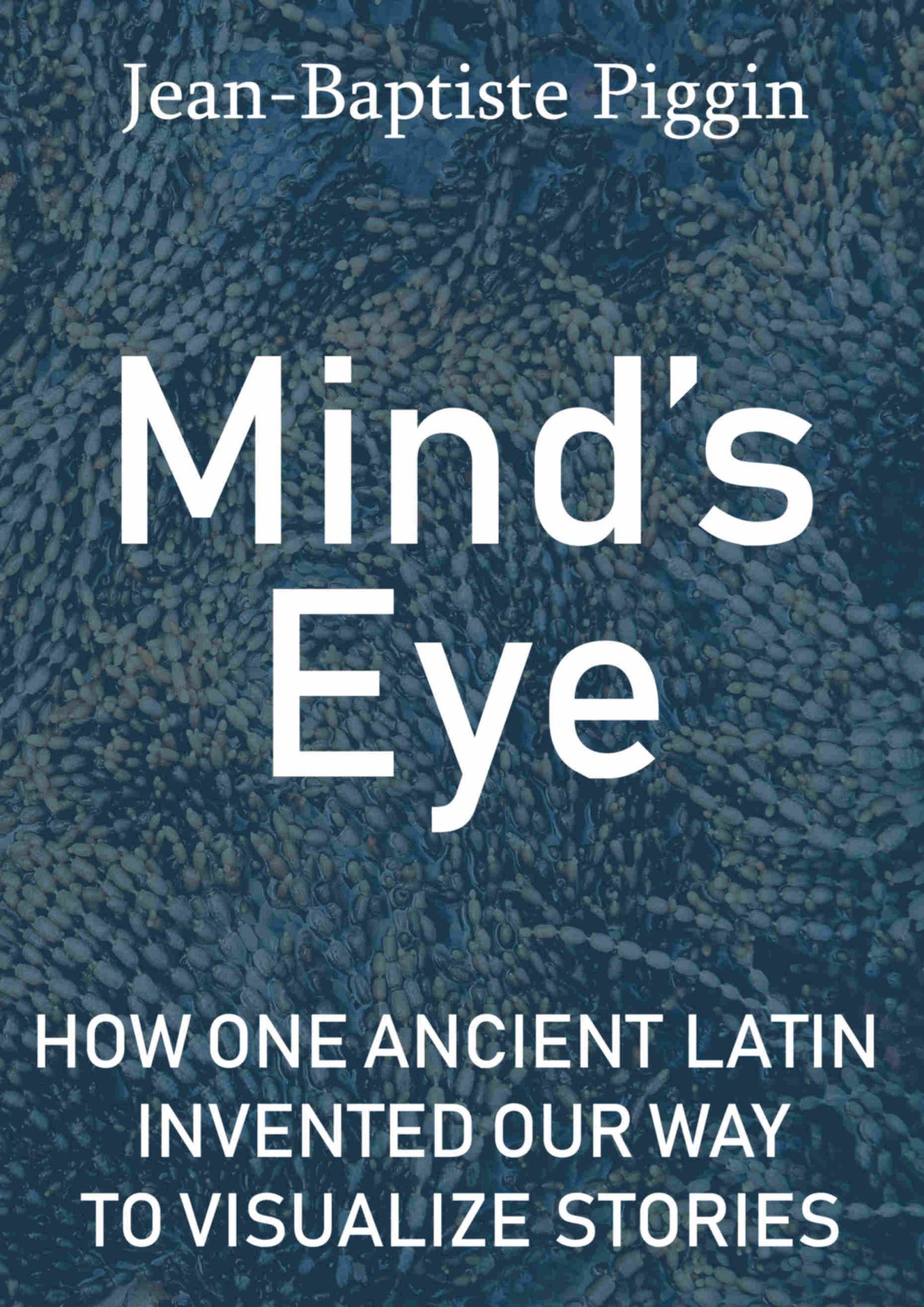It has just entered the internet, marking a fresh historic moment in the Vatican digitization program. On the same day, the Vatican's leaves of a non-illuminated Virgil from the same period, the Vergilius Augusteus (Vat. lat. 3256), arrived online.
The even older Vatican Vergil, Vat. lat. 3225, another Late Antique illustrated book with which these two are commonly compared, has been online for over a year. These two additions make the set complete. Now you can compare all three at high resolution, in colour.
Classical Rome did not have illustrated codex books. Late Antiquity invented them in one of its major advances in media and public education. The rest as they say is history.
Here is the Roman Vergil's treatment of a shipbound Aeneas enduring a storm released by the goddess Juno against him. It is often said that the style seems like a precursor to medieval art:
The Wikipedia article Vergilius Romanus notes a theory that the Roman Vergil was made in Britain. Robert Vermaat accessibly sums up the argumentation for this. If true, the Roman Vergil is the oldest of any book from England in existence.
Here is the full list of 143 digitizations on April 11, bringing the posted total to 4,215. Click (tap) on the images to go straight to the pages. I want to rush this major news to you now, and will continue to mark the list up, with more of the goodies to be described in the next few days, so do come back.
The Bibioteca in Rome has no RSS feed, no running announcements, nothing. If you want news on what they put out, you'll have to come to my unofficial site, the only news stream on the internet covering the subject. Follow me on Twitter: there's a one-click button at right to make it easy.
- Borg.copt.109.cass.XVI.fasc.59, fragments, Gospel of Luke 8:36-9:41 and 12:39-14:9, looking extremely old even to my untrained eye
- Chig.C.IV.100,
- Urb.lat.603, the Breviary of Blanche of France, a major art treasure
- Vat.lat.29 ,
- Vat.lat.268,
- Vat.lat.284,
- Vat.lat.287,
- Vat.lat.303,
- Vat.lat.317,
- Vat.lat.326,
- Vat.lat.333,
- Vat.lat.335,
- Vat.lat.357,
- Vat.lat.358,
- Vat.lat.359,
- Vat.lat.361,
- Vat.lat.363,
- Vat.lat.365,
- Vat.lat.367,
- Vat.lat.370,
- Vat.lat.374,
- Vat.lat.379,
- Vat.lat.383,
- Vat.lat.386,
- Vat.lat.387,
- Vat.lat.388,
- Vat.lat.390,
- Vat.lat.391,
- Vat.lat.394,
- Vat.lat.395,
- Vat.lat.402,
- Vat.lat.403,
- Vat.lat.404,
- Vat.lat.406,
- Vat.lat.408,
- Vat.lat.411,
- Vat.lat.417,
- Vat.lat.419,
- Vat.lat.420,
- Vat.lat.421,
- Vat.lat.422,
- Vat.lat.423,
- Vat.lat.426,
- Vat.lat.429,
- Vat.lat.431,
- Vat.lat.432,
- Vat.lat.437,
- Vat.lat.442,
- Vat.lat.443,
- Vat.lat.447,
- Vat.lat.448,
- Vat.lat.455,
- Vat.lat.456,
- Vat.lat.457,
- Vat.lat.460,
- Vat.lat.462,
- Vat.lat.464,
- Vat.lat.469,
- Vat.lat.470,
- Vat.lat.473,
- Vat.lat.477,
- Vat.lat.482,
- Vat.lat.488,
- Vat.lat.492,
- Vat.lat.493,
- Vat.lat.497,
- Vat.lat.499,
- Vat.lat.502,
- Vat.lat.503,
- Vat.lat.504,
- Vat.lat.506,
- Vat.lat.508,
- Vat.lat.509,
- Vat.lat.511,
- Vat.lat.512,
- Vat.lat.515,
- Vat.lat.517,
- Vat.lat.520,
- Vat.lat.522,
- Vat.lat.523,
- Vat.lat.524,
- Vat.lat.526,
- Vat.lat.528,
- Vat.lat.529,
- Vat.lat.530,
- Vat.lat.531,
- Vat.lat.532,
- Vat.lat.536,
- Vat.lat.537,
- Vat.lat.538,
- Vat.lat.541,
- Vat.lat.542,
- Vat.lat.547,
- Vat.lat.548,
- Vat.lat.551,
- Vat.lat.553, Eucherius of Lyon, a 9th-century manuscript possibly originating from Germany. Lowe number, CLA 1 6
- Vat.lat.554,
- Vat.lat.559,
- Vat.lat.562,
- Vat.lat.570,
- Vat.lat.574,
- Vat.lat.579,
- Vat.lat.583, Gregory the Great in an 8th-century manuscript, Lowe number CLA 1 7, with this fine fishy Q:
- Vat.lat.589,
- Vat.lat.590,
- Vat.lat.591,
- Vat.lat.595,
- Vat.lat.605,
- Vat.lat.607,
- Vat.lat.608,
- Vat.lat.613,
- Vat.lat.614,
- Vat.lat.621,
- Vat.lat.643,
- Vat.lat.1112, commentary on the Sententiae
- Vat.lat.1164, theological including Giacomo da Pesaro
- Vat.lat.1165, theological, first half is a Spanish printed book of 1548
- Vat.lat.3198, Petrarch with portrait:
- Vat.lat.3212, Italian poetry of Antonio del Alberti, etc.
- Vat.lat.3256, the Vergilius Augusteus (see the Wikipedia article)
- Vat.lat.3305,
- Vat.lat.3321, a late antique glossary, in an 8th-century central Italian manuscript, Lowe CLA 1 15: a sort of dictionary and Roget's Thesauraus combined. I originally marked this as Isidore of Seville, Differentiae (Isidore was a bit of a plagiarist and fond of substituting new words in quotes to make them his own) but it seems that this is a source used by Isidore. The manuscript has been edited (see the 1834 Rome edition on Google Books) and there is a huge bibliography suggesting this is an important source for Latin lexicography and linguistics.
- Vat.lat.3357,
- Vat.lat.3437,
- Vat.lat.3773: Thanks to ParvaVox who was quick to point out this is an old pictorial Mexican Nahua manuscript, and to @carolinepennock, who adds that it's a tonalamatl (divinatory calendar), probably from Tlaxcala. She says it is one of only a handful believed to be pre-conquest, and another digital reproduction is available at www.famsi.org. It was probably made in the 16th century, but the manuscript's history previous to the Vatican cataloguing of 1596-1600 is unknown. She says it part of what is called the Borgia group. Here's one of the hundreds of figures in it:
- Vat.lat.3797,
- Vat.lat.3867, the Roman Vergil, in rustic half-uncial script with many illustrations (see above)
- Vat.lat.3869, Hippocrates' Iusiurandum translated to Greek: ETNG
- Vat.lat.3886, Enea Silvio Piccolomini's 1458 autograph manuscript of Germania, a famed humanist review praising the orderliness and prosperity of the new Germany. It was to appear in print in Leipzig in 1496. This second part is marked Aeneas Cardinalis Sancte Sabine ad objectiones Germanorum in a 16th-century hand on the front flyleaf. See Gernot Michael Müller
- Vat.lat.4104, 16th-century letters to Angelo Colocci, Fulvio Orsini and others
- Vat.lat.4221, 11th-century three-column bible, possibly with some Vetus Latina readings, with fine canon tables:
- Vat.lat.4329, folio 87, a flyleaf, is a recycled 7th- or 8th-century page with Liber Comitis on it, Lowe number CLA 1 20:
- Vat.lat.4777, Dante? incomplete
- Vat.lat.4782, Dante, two-column ms
- Vat.lat.4965, the 9th-century report/translation from the Greek concerning the 8th Ecumenical Council in Constantinople for Pope Hadrian II by Anastasius Bibliotecarius: he seems to have got scribes in the papal scriptorium to write up this fair copy 870-871, then wrote his corrections on it. With these remarkable alterations, this manuscript offers insights into a first-millennium translation bureau (link to Berschin). HT as well to @LatinAristotle who flags a major article by Réka Forrai about this papal translator and diplomat.
- Vat.lat.5697, Peter Comestor's Historia Scholastica , early 15th century, one of the masterpieces of Gothic illumination, with wonderful images such as this scene:
This is a charming Eve about to bite the apple as the Devil tells her it's sooo good: Notice the selfie-like distortion? Please, somebody, post this on Instagram. - Vat.lat.5704, a 6th-century Latin translation of Cassidorus's Historia Tripartita almost certainly made in his own scriptorium at Vivarium, Italy. Lowe number CLA 1 25. It has been argued by some scholars that marginal notes to the Enarratio in Canticum Canticorum of Philo Carpasianus may be by the hand of the great Cassiodorus himself: If we had not had the Vergils, I would certainly have headlined this week's post with this treasure.
- Vat.lat.5759, Ambrose of Milan on Genesis and the Evangeliorum Libri of Juvencus, late 10th century, written over the top of an 8th-century gospels probably from Bobbio, Italy. The final pages have not been refilled, so you can see clearly how a palimpsest was prepared. Lowe number CLA 1 37
- Vat.lat.7016, an 8th-century gospels from Italy intact, Lowe number CLA 1 51 with canon tables:
- Vat.lat.7189, commentary on canon law by Johannes de Turrecremata (died 1468): the missing volume of an autograph series Vat. lat. 2572-2576 (Gero Dolezalek).
- Vat.lat.11258.pt.B, a book of designs and plans for baroque Rome. Anthony Grafton notes in the Rome Reborn catalogue that this architectural drawing (folio 200r) for the centrepiece of the Piazza Navona by Francesco Borromini was not implemented.
- Vat.sir.598, an 1871 copy of records of 19 oriental synods
- Vat.turc.150,
